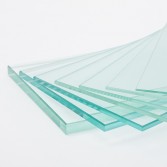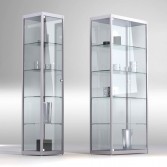Glass tempering
Thanks to the constant search for innovative technologies, the experts of the Mirror Trade Company are able to work with equipment that does not compromise the quality and reliability of our products. This approach, combined with constant investment in new production facilities, allows the Mirror Trade Company, even after more than two decades of activity on the market, to be distinguished by its ambition and dynamic development. As a result, one of the important stages of the company's development was the installation of a glass tempering line.
Tempered glass is a glass that is several times stronger, more durable and more resistant to mechanical damage and sudden temperature changes than ordinary non-tempered glass. It is estimated that it takes about 5-7 times more force to break tempered glass than normal glass. Tempered glass is also much more resistant to thermal shock, i.e. a sharp change in temperature (withstands changes of up to 200 degrees Celsius) and uneven heating of the glass surface (and, as a result, point shielding of the glass structure). In addition, tempered glass can be successfully used outside in extreme temperature conditions.
We deal with tempered glass every day. Thanks to its properties, it can be used wherever it is dangerous to use ordinary glass. Tempered glass is also considered safety glass because of the way it shatters. Unlike ordinary glass, which breaks into sharp pieces of various sizes when broken, tempered glass breaks into small pieces without sharp edges (the number and size of pieces are checked during quality tests). This method of disassembling glass allows you to minimize the risks to the health and life of people and animals, as well as reduce possible losses (mainly due to damage to property, for example, the floor or other structural elements).
First of all, we often find tempered glass in construction. The possibility of arranging transparent partitions has long been taken into account by architects and designers. Such a solution not only effectively and sustainably divides the space, but also provides visual contact with other residents, and unlike opaque walls, natural lighting, which in turn leads to less energy consumption needed to light a room separated by tempered glass.
Interior elements and exterior facades of buildings (for example, glass office buildings) can be made of tempered glass. When it comes to interior design, tempered glass is used to create almost all elements that are usually obtained from other materials, such as wood. Such elements include various types of furniture, doors, panels and floors.
Due to its properties, tempered glass can be used where greater strength is required. From tempered glass, for example: glass structures, for example, in office buildings, glass furniture, shower cabins, glass floors, glass stairs, glass panels, glass shelves, tabletops, glass boards, glass railings and many other glass products are made.



